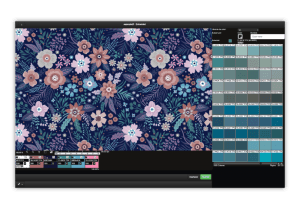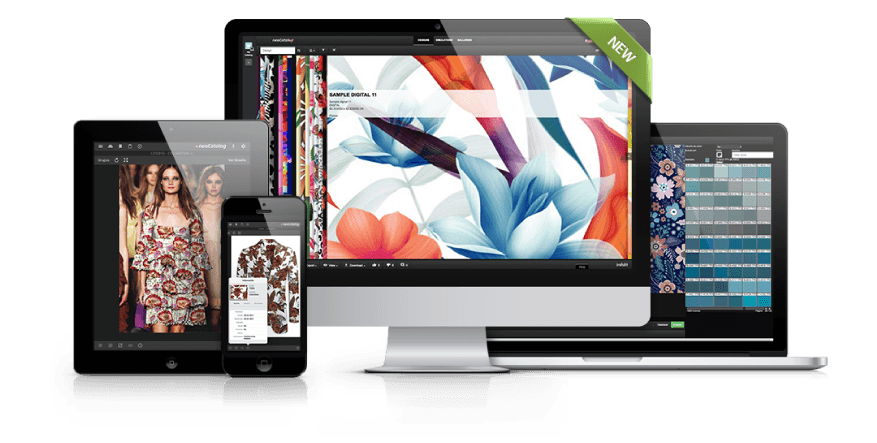Overcoming challenges with digital textile workflow (Article hosted by WTIN)
The textile printing sector is experiencing a period of inactivity due to the global quarantines established by governments because of Covid-19. The virus was first detected in China last December and soon brought the country’s textile industry to a complete standstill. This sent shockwaves through the textile supply chain and caused a dramatic drop in revenue for companies operating in the digital textile printing market.
By early spring, the virus had become a global pandemic and forced industries to reinvent themselves to overcome the economic and social crisis caused by the pandemic. In the textile printing sector, according to the latest study published by the ITMF, orders have fallen by 41% and a decrease in business of 33% is expected.
However, according to Inédit offices in China, bigger factories have survived by diversifying their activities. In contrast, small and medium-sized organisations have been left struggling to stay afloat.
This situation means companies are now considering new challenges. We find a sector that has come to a standstill, where the production chain remains static due to a lack of active suppliers and buyers. In Europe and the US, the consumption of fashion has been severely restricted to combat the virus, but when high streets are reopened there is no guarantee of a quick recovery. Brands and retailers have limited plans for the current spring/summer season and economists are forecasting worrying sales figures. Textile manufacturers in countries that rely on exports for a strong economy are bearing the brunt of this crisis.
But these current challenges have also opened up new opportunities in the sector. Some companies have chosen to branch out and manufacture much-needed personal protective equipment (PPE). In China, where economic recovery is under way, some textile printing OEMs are looking to expand their product catalogues by introducing a range of new machines that target face mask production.
Other enterprises have begun preparing resources for the implementation of digital textile printing technologies, whereas some are looking beyond the pandemic and are preparing for a more sustainable manufacturing industry.
INFLUENCE OF INKJET
Digital printing has been an ally of textile finishers in this moment of crisis because the technology is much more versatile than analogue alternatives. Companies that have invested in digital structures will be better placed to answer the immediate needs of clients. This is especially true if, during this transition, they have been maintaining the infrastructure that enables customised and on-demand printing. These processes lead to a reduction in production costs for digital companies that will mean greater flexibility for the manufacturer when adapting to the new situation. A common question being asked is how to prepare a digital team for this new norm? We summarise it in two basic points: have everything ready to go; and improve communication in the workflow. When we advise the client to be ready to proceed, we are referring to the importance of having the infrastructure in place by the time the industry starts up again, which will help to ensure a quick response. It is important to know the status of the printers and the best way to do this is to print a colour proof. With this test, companies will be able to see if their printers are still producing the same colours, or if they match their requirements. If necessary, the printers can be re-profiled to obtain the desired results. With neoStampa RIP software it is an easy process to carry out and this test will help organisations to better understand the health of the inks, print heads and the general quality of the printers they have. Preventative measures can then be taken to minimise machine downtime in the future. It is not only necessary to prepare the machinery; it is also important to keep the team informed and prepared for new developments. Whether you decide to diversify your activity or wait for the textile sector to start up again, the design, production and commercial teams must be ready to start working.CONNECTED WORKFLOW
One thing that particularly concerns our customers is how to maintain communication between departments, and even between customers, with current restrictions on mobility. This is what we call having the workflow connected in digital printing: being able to maintain communication between different departments without the need to be physically there. Inédit Software has been working for years to create these connections, which are becoming more necessary with every passing day. Companies that base their designers at the headquarters in one country and print in another benefit the most from technologies that enable this level of communication. There are different solutions that help to improve this communication flow, which are specialised in the sector. One of the main points of this workflow connection is the communication with the client. Although production is minimal in most economies due to order cancellations and border closures, design creation has continued and work on new seasons has already begun. Sales teams, therefore, must start selling the designs, but they cannot go to see the client or showcase the products at events. An interesting solution is the creation of a virtual showroom through which clients can be presented with the designs that are for sale. Virtual showrooms enable businesses to demonstrate how simple it is to modify designs at a moment’s notice. There are even tools that will allow a business to present a design in a 3D simulation. The client will have the product at their disposal and the salesperson will have the facility to show it without having to be physically there. One tool designed specifically for this purpose is neoCatalog – a collection of designs that are stored on a business’ own server. neoCatalog enables designs and galleries to be sent directly to clients.
An interesting solution is the creation of a virtual showroom through which clients can be presented with the designs that are for sale. Virtual showrooms enable businesses to demonstrate how simple it is to modify designs at a moment’s notice. There are even tools that will allow a business to present a design in a 3D simulation. The client will have the product at their disposal and the salesperson will have the facility to show it without having to be physically there. One tool designed specifically for this purpose is neoCatalog – a collection of designs that are stored on a business’ own server. neoCatalog enables designs and galleries to be sent directly to clients.

